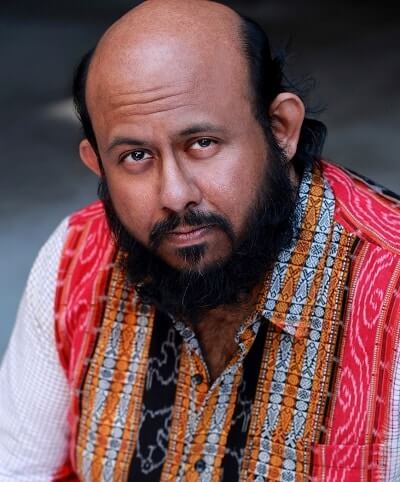Many Indigenous people today continue to have Sikh or Afghan names. This message at the end of the film The Furnace brings home the deep historical connections that people of South Asian origin have had with the original inhabitants of Australia.
AT A GLANCE
- The Furnace, the lone Australian film at this year’s Venice Film Festival, is set at the time of the Gold Rush, late 1800s.
- It features strong characters from the South Asian and Middle Eastern community who worked as cameleers in the outback.
- Director Roderick MacKay is credited for authentic portrayals of characters, picking a strongly multicultural cast who speak six different languages.
Known as the ‘Ghans’ – short for ‘Afghans’ even though they did not all hail from Afghanistan – they worked the camel trains in the outback in the late 1800s, transporting goods and materials as a young nation came into being.
Later the history of the cameleer ‘Ghans’ became lost to modern Australia, their work and contribution – indeed their very existence – only coming to the fore in a substantial way early this century.
Now, a critically acclaimed Aussie film is helping to make them mainstream.
Roderick MacKay, director of The Furnace told Indian Link, “I certainly wasn’t taught about the cameleers in high school or university. It was six years ago that I first stumbled upon some black and white images of the cameleers in the outback in a book by Emeritus Professor of History, Geoffrey Bolton. With what little information was available, I began to research into who these extraordinary men were and why they were here so long ago. That’s when I began to fully appreciate that the cameleers are the unsung pioneers of Australia’s inland.”
He added, “Australian history has typically been written from a very narrow Anglo-Celtic perspective and so sadly, it doesn’t surprise me that our Muslim, Sikh and Hindu pioneers have been swept under the rug.”
In his film, a group of cameleers in the Gold Rush era become involved with white settlers and the local Aboriginal community. Admittedly their relationship with the latter is much smoother, given their similar spiritual and psychosocial perspectives and their readiness to share culture and language. In their own separate ways, each community is forging its own sense of identity; together, they are building a notion of nationhood.
In a stroke of genius, MacKay has his characters speak their native tongues so that there are some six different languages to be heard in the film, including Hindi, Punjabi, Pashto, Cantonese and the Western Australian Indigenous language Badimaya.
Set in the gold mining town of Mt. Magnet six hours away from Perth, the film brings together a multicultural cast to support lead actor David Wenham’s character, a gold thief on the run. As his Afghan cameleer Hanif, the brilliant young Egyptian actor Ahmed Malek becomes parallel lead.
READ ALSO: The Indian links in new Aussie film ‘The Furnace’

Indian-origin actors Kaushik Das and Mahesh Jadu play Jundah and Sadhu, Sikh cameleers and family figures to Hanif.
“The film itself is historic, starting a conversation about an era not discussed much,” Das told Indian Link. “With their remarkable work exploring the outback, and with their blood, sweat and tears, the cameleers opened the frontiers to the rest of the country.”
Unlike anything he has ever done before, the highpoints from the experience were many.
“Being at Mt. Magnet, still an active mining site, was roughing it, but as spiritual Indigenous land, I felt the energy of the place. Meeting the original descendants of the characters we were playing was special too – many were part-Indian. I also felt a great responsibility in learning to speak Badimaya, a sleeping language, as its last speaker died a year ago. He knew though that efforts were being made with his language in this film, so that was special. And of course the camels – I fell in love with the amazing creatures.”
The challenges? “Filming in the 40-degree heat, with the flies. Every time we opened our mouths, we took a few flies in!”
Particularly special however, was playing a Sikh character, being a Bengali himself.
The Australian Sikh Heritage, serving as Sikh consultants, advised with names and attire of the times. Most importantly, they tied the turbans, which they insisted must be kept authentic.
Jundah was apparently the name of a real cameleer, Das revealed. “He operated one of the largest camel trains from the 1890s to the 1930s. When motorized transport came, he lost his livelihood and took his own life. His name probably came from the word jhunda which means flag. I like to think of him as flag bearer of the community.”
It’s clear that Das is quite taken with this period of history. Coincidentally, this criminal lawyer-turned-actor-producer-writer was himself writing a script set in this era, inspired by Adelaide artist Peter Drew’s “Aussie” posters, when he scored an audition with The Furnace.
Roderick MacKay is convinced we need to tell more stories of the time. “The Furnace only scratches the surface of the history of our very fascinating Sikh, Muslim and Hindu cameleers. I hope it encourages people to go on their own research journey and awaken more inclusive notions of Australian identity.”
The Furnace was the only Australian film at this year’s Venice Film Festival.
For screening locations, visit
https://www.umbrellaentfilms.com.au/movie/the-furnace/




